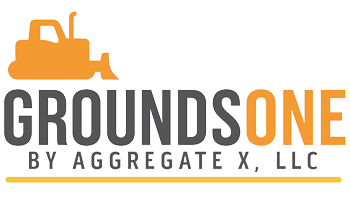There are two main demolition techniques crews use to bring down a building: the wrecking ball and implosion. Let’s take a look when each method is best used.
Wrecking Ball/Excavator
The wrecking ball is a heavy ball hanging from a crane that gets swung into a building. It’s great for smaller buildings and those with tough concrete. Excavators can also be used in this demolition technique along with or instead of a wrecking ball for more precise work. Both methods involve direct contact with the structure to bring it down.
Examples of Wrecking Ball Use:
- Small Buildings: The wrecking ball technique is effective for houses, warehouses, and small stores.
- Concrete Buildings: When dealing with strong concrete structures, the wrecking ball can help break through more efficiently.
Advantages:
- Precision in Hits: Skilled operators can guide the wrecking ball precisely, targeting specific areas.
- Versatile: Wrecking balls can be used for various types of buildings, making them flexible for different projects.
Challenges:
- Dealing with Debris: The wrecking ball demolition technique often leaves behind larger chunks of debris, requiring more heavy duty cleanup efforts.
- Height Limitation: Due to the limit of the reach of a crane or excavator, it may not be a wise choice for demolishing very tall structures.
Implosion

Implosion is a more controlled demolition technique. It is the process of placing explosives in specific places to make a building collapse inward. This method is particularly useful for tall buildings in crowded urban areas.
Examples of Implosion Use:
- Tall Buildings: Implosion is the preferred method for skyscrapers where space is limited around the site.
- Urban Areas: In busy cities, implosion provides a controlled and tight space solution.
Advantages:
- Space Efficiency: Implosion allows for a controlled collapse within a confined space, so as not to damage the surrounding structures.
- Reduced Disruption: It’s less noisy and causes fewer vibrations compared to a wrecking ball since it is usually over in a matter of seconds.
Challenges:
- Environmental Considerations: Implosion requires careful planning to address environmental concerns, such as dust and noise.
- Expertise Requirement: Successful implosion requires a great deal of expertise to ensure safety and precision.
How To Choose Demolition Technique
The choice between a wrecking ball type demolition and an implosion depends on things like the size, the kind of structure, and the location of the building. Wrecking balls are excellent for smaller projects, while implosion is the preferred method for tall structures in urban environments. Understanding these demolition techniques helps in making informed decisions for successful demolition in construction and redevelopment projects.
Grounds One are experts in demolition and debris removal. Our team can help you decide the best way to bring down a building. We quickly complete the job, and we offer extremely competitive prices. Give us a call at 567-318-5444 for a free estimate!
